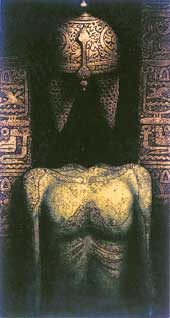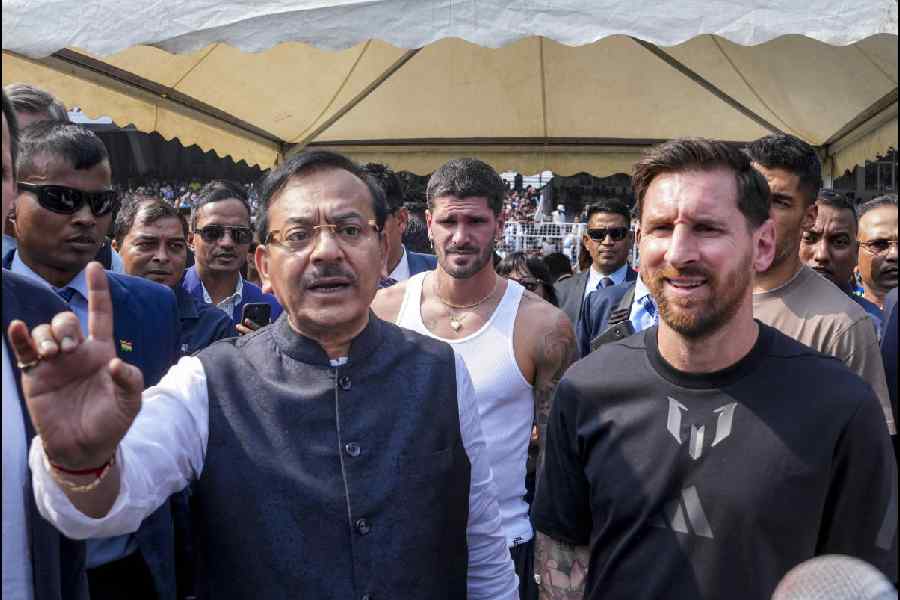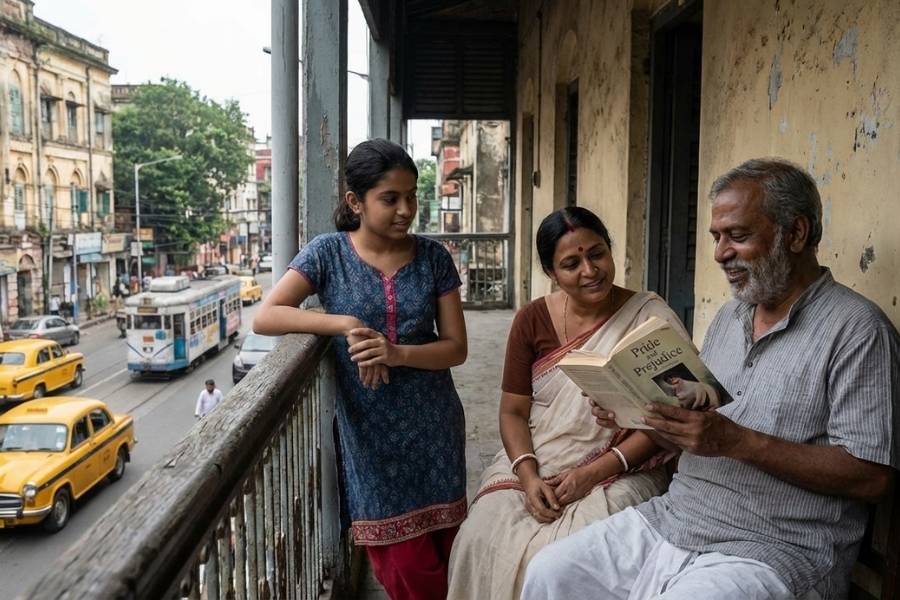 |
| Subhas Chandra Nath’s award-winning Warrior |
In terms of sheer size, Birla Academy’s annual exhibition is the biggest and the most representative of the mainstream trends, bringing before viewers both the established and the unknown. With over 440 works from as many artists — about 247 of these in the competitive section — and spread over four galleries, it is, as usual, like several shows rolled into one, leaving a rather fragmentary impression. Besides, given its catholicity, standards vary. But this magnum show, on till January 31, offers an excellent opportunity to those looking for a niche in the art scene.
First the awardees. Animesh Datta, who shares the painting prize with Pappu Bardhan, is an intelligent colourist, calibrating tones and textures to suggest substance and space. But the work’s insidious tension comes from the tiny figures that seem to predict an unfolding drama. Bardhan chooses an unadorned, if somewhat sentimental, image to articulate loneliness and an environmental concern. While awardee Koushik Coomar resurrects the refined detailing of the Bengal School, Shuvrakanti Mitra can make watercolour seethe with flux. Printmaker Subhas Chandra Nath’s technical precision and sculptor Gourab Malakar’s quiet rigour are seen in their prize-winning works.
The Bikash Bhattacharjee style, now pursued by such artists as Sanatan Dinda, leaves youngsters spellbound. Dinda, for example, probes the tactile nuances of surfaces with bravura brushwork. Ashok Karmakar scrutinises ageing flesh and contrasts its sentient decay with the crisp immutability of metal and twine. As for Dhananjoy Ghosh, he gets the intimate disorder of a room — clothes, stacks of chart paper, cup, etc — to convey the identity of the room and its user. Pramathes Chandra, Gopal Chowdhury and Kalyan Mukherjee are other photorealists you notice.
Among the abstract and semiabstract works, Chaitali Mullick’s brooding Composition and Subhabrata Nandi’s oppressive cityscape in sooty black and smoky greys may be cited. Swati Mukherjee’s disintegrating city and Pratima Seal’s scaffold of grim lines defining an urban pen, have quite acerbic undertones.
Among the sculptors, there’s Prabir Roy whose bronze Musician explores the elasticity of an elongated feminine form. Sujit Karan’s broken hand fan, in bronze, and Swapan Jana’s ceramic are works to note, too. Also noteworthy are Mrinal Sarkar’s calligraphic strokes and the landscapes of Prasanta Kolay and Sandip Roy.
Artists of different age groups figure in the non-participatory section. The quaint imagery of Murulidharan, the buildup of atmosphere in Animesh Nandi’s oil, and the abstract works by Hiran Mitra and Murukesan hold the eye. As does Jayashree Burman’s inventive take on the traditional pata. Sculptors Bimal Kundu and Tarak Garai impress with scale. Rishi Barua’s Pieta, reworking Michelangelo’s theme in the stylistic terms of Somnath Hore, proves riveting. Lastly, a buoyant spirit of play informs the paper craft of Partha Pratim Deb and the doodling of Kishore Chatterjee.











